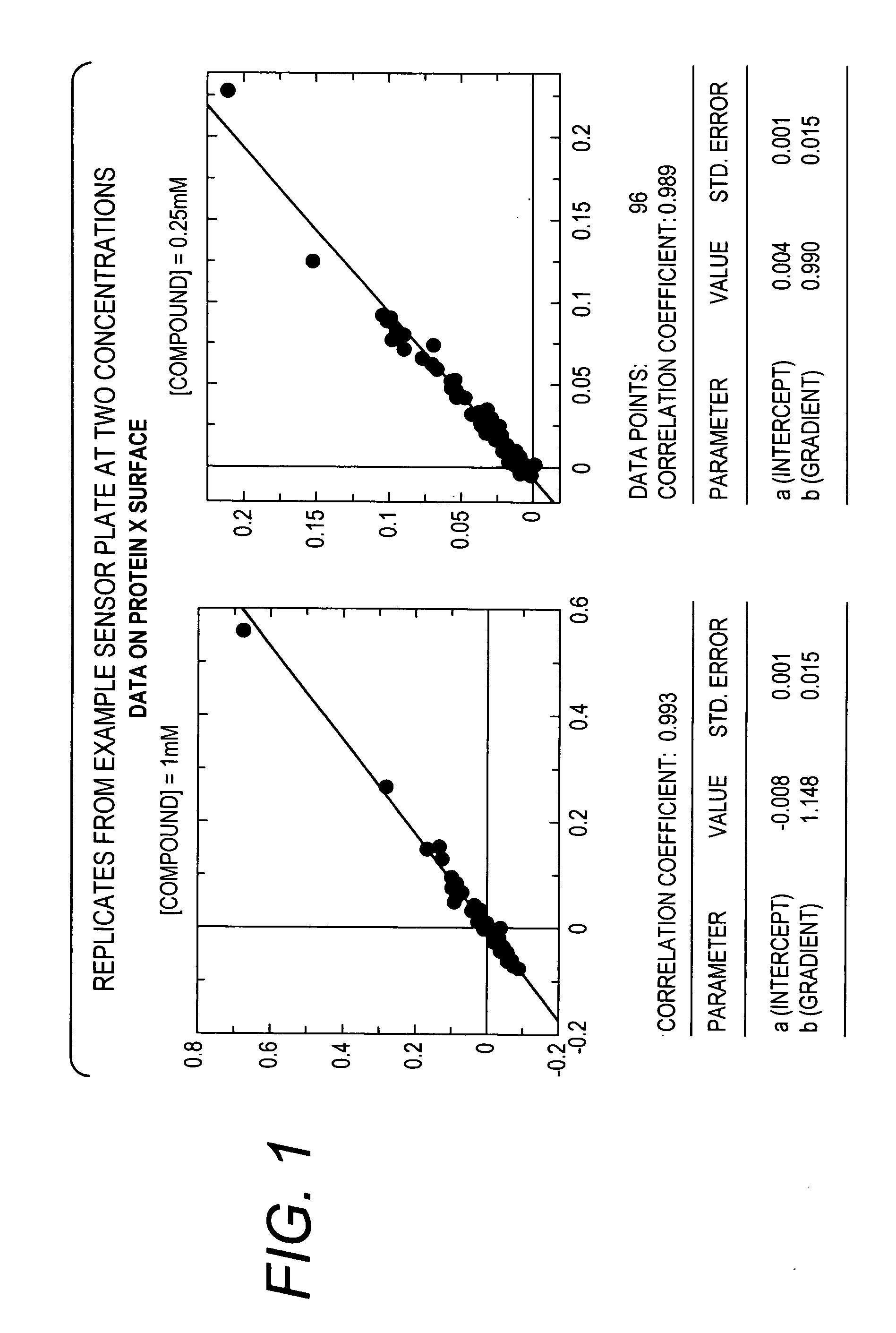Method for Employing a Biosensor to Detect Small Molecules ("Fragments") that Bind Directly to Immobilized Protein Targets
a biosensor and fragment technology, applied in the direction of material excitation, instruments, measurement devices, etc., can solve the problems of weak binding, difficult to generate novel leads, complex identification of high-quality lead compounds for druggable protein targets, etc., to achieve less reagents, less time for determination, and more economical
- Summary
- Abstract
- Description
- Claims
- Application Information
AI Technical Summary
Benefits of technology
Problems solved by technology
Method used
Image
Examples
examples
[0064]A target molecule, Protein X (26 kDa), having an ATP-ase domain, was immobilized to a colorimetric resonant reflectance biosensor. A compound library having an average MW of library members of <300 Da was added to the biosensor. Direct binding of the library constituents to the biosensor was detected. Binding data for the compound library was also obtained from biophysical methods, including NMR and X-ray crystallography.
[0065]About 500 molecules in 2% DMSO buffer were screened. The read time was less than 10 minutes. The ligand screen concentrations were 250 μM and 1 mM. The results showed: a dynamic range for 200 Da ligand with 1:1 stoichiometry, full binding 60 pm, S / N=12; proper identification of positive and negative controls; a range of affinities detected / titrated 1 nM to ˜1 mM; and strong hit correlation with lower throughput biophysical methods.
[0066]The following compounds were identified (see FIGS. 2 and 3):
[0067]Fragment A: (Mr=265 Da, Kd˜0.01 uM)
[0068]Fragment B: ...
PUM
 Login to View More
Login to View More Abstract
Description
Claims
Application Information
 Login to View More
Login to View More - R&D
- Intellectual Property
- Life Sciences
- Materials
- Tech Scout
- Unparalleled Data Quality
- Higher Quality Content
- 60% Fewer Hallucinations
Browse by: Latest US Patents, China's latest patents, Technical Efficacy Thesaurus, Application Domain, Technology Topic, Popular Technical Reports.
© 2025 PatSnap. All rights reserved.Legal|Privacy policy|Modern Slavery Act Transparency Statement|Sitemap|About US| Contact US: help@patsnap.com



